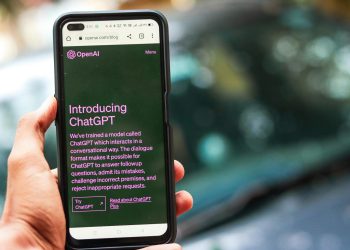Evolution of Language Models
Language models have changed the whole game in the world of natural language processing (NLP). Let's dig into how pre-trained models stepped onto the scene and what big language models are doing for various tools and tasks.
Emergence of Pre-trained Models
Pre-trained language models came in like a game-changer for NLP tasks. Instead of starting from scratch to build language AI for products, using pre-trained models saves heaps of time and effort (Cohere Blog). They're trained on vast collections of text, letting them learn the nitty-gritty of language patterns. The introduction of the transformer model back in 2017 set things in motion for big names like BERT (Bidirectional Encoder Representations from Transformers) and GPT (Generative Pretrained Transformer) to rewrite the rule book in NLP.
| Model | Introduced | Cool Features |
|---|---|---|
| BERT | 2018 | Understands context from all sides |
| GPT-2 | 2019 | Generates text with no supervision needed |
| GPT-3 | 2020 | Can learn with just a few examples |
| RoBERTa | 2019 | Upgraded BERT with more training time |
| ELMo | 2018 | Contextual embeddings using LSTM |
Impact of Large Language Models
Massive language models like GPT-3 and BERT have thrown their weight around in various applications like speech recognition, translating languages, summarizing text, creating content, and more. These models dive deep into data to generate text that sounds like it could come from a real person and tackle tough language puzzles.
They may be smart, but they still have room to grow—they can't quite reason like a human or fully grasp the world (AltextSoft). Yet, there's a bright future ahead with goals like making these models bigger, letting them handle many types of data, and making sure we can explain how they work (AltextSoft).
If you’re eager for more on large language models, hop over to our large language models page.
| Application | Model Used | What It Does |
|---|---|---|
| Text Generation | GPT-3 | Crafts top-notch content with little need for humans to step in |
| Natural Language Understanding | BERT | Boosts accuracy in reading emotions and answering questions |
| Code Completion | GPT-3, Codex | Lends a hand to coders by finishing their thoughts |
| Machine Translation | GPT-2, GPT-3 | Delivers translations that are on point |
| Conversational AI | GPT-3, RoBERTa | Powers smart chatbots and virtual assistants with real chatter |
These developments underscore why it’s smart to keep an eye on the latest and greatest in language models. To get the full scoop on how these models act behind the scenes, check out our page on how large language models work. From their early days to the present impact, pre-trained models have absolutely turned semantic processing upside down and for the better.
Key Pre-trained Models
We're about to chat about some pre-trained language models that really make a splash due to their top-notch performance and how everyone seems to be using them. Let’s shine a light on the big players: BERT, GPT-2, ELMo, RoBERTa, and GPT-3.
BERT (Bidirectional Encoder Representations from Transformers)
BERT is Google's brainchild and has shaken up the world of natural language processing. It’s like your buddy who listens to every side of the story as it checks out both sides of a word's context. This has completely changed the game in tasks like language translation, sentiment checks, and summarizing text (GeeksforGeeks). For the full scoop, stop by our BERT model page.
| Model | Key Features | Applications |
|---|---|---|
| BERT | Two-Way Context Understanding | Translation, Mood Reading, Summing Up Text |
GPT-2 (Generative Pretrained Transformer 2)
OpenAI’s GPT-2 is like that wizard in the text generation field. With a huge library of words under its belt, it’s ready to spin out human-like speech for all kinds of text work. Even the smallest GPT-2 runs with 124 million parameters, making it quite the language whiz (GeeksforGeeks). Swing by our GPT-3 spot for more info on its next-gen cousin.
| Model | Key Features | Parameters |
|---|---|---|
| GPT-2 | Transformer Build, Big Training Base | 124 million |
ELMo (Embeddings from Language Models)
From the labs of the Allen Institute for Artificial Intelligence, ELMo came out swinging with its deep dive into word surroundings. It doesn’t just throw one word meaning around but changes based on the sentence. This makes ELMo a knockout in tasks like identifying word roles and answering questions (GeeksforGeeks). If you're curious about how it fits into finding info, check our language models for information retrieval.
| Model | Key Features | Unique Capability |
|---|---|---|
| ELMo | Word Meaning Shifts with Context | Flexible Word Meanings |
RoBERTa (Robustly Optimized BERT)
RoBERTa comes to us from the minds at Facebook AI, building upon its cousin BERT but doing it with a bigger stack of words and more time to learn. This fine-tuning puts it at the top of the class in many language tests. Everyone's picking RoBERTa for jobs where accuracy is king (GeeksforGeeks).
| Model | Key Features | Optimization |
|---|---|---|
| RoBERTa | Big Word Dataset, Extended Learning Time | Better Test Scores |
GPT-3 (Generative Pretrained Transformer 3)
GPT-3, also hatched by OpenAI, takes things to the next level in the big arena of language generation. With a jaw-dropping 175 billion parameters, GPT-3 writes stuff that could fool even a seasoned human reader. Whether it’s penning up crazy stories or slapping together technical papers, this model does it all (AltextSoft).
| Model | Key Features | Parameters |
|---|---|---|
| GPT-3 | Near-Human Text Crafting, All-Rounder | 175 billion |
Getting a grip on these front-running pre-trained models means gaining insights into their individual superpowers and how they can slide into different projects. For deeper dives into their roles and achievements, browse our articles on cutting-edge language models and uses of giant language models.
Applications of Pre-trained Models
Pre-trained language models have kinda become a huge deal in artificial intelligence (AI) and natural language processing (NLP). They've really upped the game in stuff like understanding language, generating text, and even completing code, changing how we tackle complex tasks involving language.
Natural Language Understanding
Natural language understanding (NLU) is all about making sense of what people say and mean. Models like BERT (Bidirectional Encoder Representations from Transformers), built by Google, have set the bar high here. BERT's been a game-changer in tasks like language translation, figuring out if reviews are good or bad, and making texts shorter (GeeksforGeeks). These models have boosted how accurately and swiftly we grasp what people are saying across different topics.
Some cool uses of NLU are:
- Getting the vibe in a tweet or review
- Picking out important names or places
- Swapping languages
- Squeezing down long articles
Wanna dive deeper? Check out our natural language processing models page.
Text Generation
Text generation is like coming up with stories or articles just from a hint. OpenAI's GPT-2 (Generative Pretrained Transformer 2) is a standout in this space. Trained on loads of English text, it writes like it passes the Turing test, producing coherent, relevant stuff. The smallest version packs in 124 million parameters, and it's a beast at creating text and handling various tasks. Use it for things like:
- Writing blogs or reports
- Spitting out news articles
- Telling tales
- Powering chatbots
Geek out more on our gpt-3 page.
Code Completion
Code completion helps developers finish their code quicker, like a digital code buddy. Models like Microsoft's Phi-1, a transformer model, excel at this. With 1.3 billion parameters, it's geared for Python and works on top-tier data, showing how more polished data makes better models.
Neat tricks from code completion models include:
- Coloring code for easier reading
- Suggesting what function to use next
- Spotting errors
- Offering code snippets you might need
See these cool tools in action on our how do large language models work page.
| Model | Parameters (Millions) | Key Tricks |
|---|---|---|
| BERT | 110 | Understand, Sentiment |
| GPT-2 | 124 | Write, Talk |
| Phi-1 | 1,300 | Code, Python |
Pre-trained language models are the secret sauce in loads of things, pushing forward how we understand, write, and code. They're the backbone of AI’s future, charging ahead to build smarter systems.
Catch more about their magic on our applications of large language models and advancements in language models pages.
Advancements in Language Models
When it comes to language models, man, we've seen impressive leaps but ain't hit the finish line just yet. Current models do trip up on a few hurdles, though. Meanwhile, the horizon is packed with killer trends that could flip the script on how we vibe with these tech wonders.
What's Holding Current Models Back?
Even with all the buzz around models like GPT-3 and BERT, they've got some hiccups. These quirks keep pre-trained language models from truly shining:
- No Street Smarts: At the end of the day, models miss out on street smarts and basic human-like reasoning. They sometimes spit out words that sound right but are off the mark.
- Context Conundrums: Models handle context better than before but just can't read the room like we do. This gap can lead to them dropping the ball in tricky conversations (TechTarget).
- Bias Blunders: Training data bias still creeps in, making it hard to nail truly fair models.
- Mystery Machine: These models are like black boxes—you know what goes in and comes out, but what happened in between is anyone's guess. That's a pain when you wanna tweak or fix (SuperAnnotate).
| Limitation | Description |
|---|---|
| No Street Smarts | Struggles with tasks requiring human-like reasoning. |
| Context Conundrums | Models don’t grasp content as humans do, missing nuances here and there. |
| Bias Blunders | Biases in training data can reflect in models. |
| Mystery Machine | Tough to get a real sense of how models arrive at their outputs. |
Ahead About Language Models
Next-gen language models are gunnin' to smash these walls and bring jaw-droppin' changes:
- Scaling Up and Smartening Up: The race is on to boost model size and brains, mo' data, mo' power, resulting in sharper tasks and mind-blowing applications (AltextSoft).
- Connecting the Dots: Merging text with images, audio, and video means models will juggle various inputs and bring virtual helpers to life. This fusion's gonna make interactions way more jam-packed (SuperAnnotate).
- Making Models Less Mysterious: Breaking down why models do what they do will build trust. More transparency equals a more reliable AI for the masses (AltextSoft).
- Chattier Bots: Models will be tuned to mimic natural convos, perfect for making your AI chats less awkward and way more enjoyable.
| Future Trend | Description |
|---|---|
| Scaling Up and Smartening Up | Pumping out bigger, wit-packed models for better data munching and smart apps. |
| Connecting the Dots | Blending text with visuals and sound for supersized interactions. |
| Making Models Less Mysterious | Shining light on AI choices to boost trust and dependability. |
| Chattier Bots | Fine-tuning bots for chats that flow more like a natural convo. |
By tackling hang-ups and ridin' these waves, we're cruising toward an AI future where models don't just get context right but come packed with reliability, clarity, and pizazz galore. Get the scoop on what language models are cookin' next on the future of language modeling as we track these sweet advances.
Fine-tuning Pre-trained Models
Tweaking pre-trained language models is like putting the final touches on a masterpiece. It involves adjusting the model's settings so it can tackle specific jobs or cater to different sectors. This makes it possible for us to leverage these powerhouse models, tailoring them to our special requirements. Let's break down the steps involved in fine-tuning, check out some effective techniques, and see how this applies across various industries.
Process Overview
This is a fancy way of saying that we teach a model to improve with examples we give it. Using labeled data, we nudge a pre-trained model's memory to get it to perform specialized tasks better, sharpening its understanding with the new info (SuperAnnotate).
| Step | Description |
|---|---|
| Data Collection | Snag labeled examples related to the task at hand. |
| Model Initialization | Load up the existing language model. |
| Training | Adjust the model using the labeled data. |
| Evaluation | See how the model handles a test batch. |
| Deployment | Roll out the fine-tuned model where it's needed. |
For those wanting the full scoop on fine-tuning, check out our in-depth look at fine-tuning language models.
Techniques for Effective Fine-tuning
Sprucing up these models can be done in several ways:
Parameter-Efficient Fine-Tuning (PEFT)
This method keeps most of the model's gears locked and tweaks a few parts only, saving memory and avoiding a kind of amnesia where old info gets dumped (SuperAnnotate).
Retrieval Augmented Generation (RAG)
Think of RAG as a blend of asking questions and digging for answers, making sure the model stays fresh with facts. It taps into outside info to ensure the model's answers are spot-on, and works great paired with traditional fine-tuning (SuperAnnotate).
Multi-Task Fine-Tuning
Here, multiple tasks are thrown into the mix, letting the model become a jack-of-all-trades. It sucks up lots of data but turns into a versatile pro in handling a mix of duties (SuperAnnotate).
| Technique | Description | Advantages |
|---|---|---|
| PEFT | Modifies a few key settings | Uses less brainpower |
| RAG | Merges generating with digging info | Ensures precise answers |
| Multi-Task | Trains on diverse tasks | Creates adaptable supermodels |
Industry-Specific Applications
These language whizzes bring massive benefits to different sectors. Fine-tuning amps up this advantage even more:
Customer Service
In customer service, fine-tuned models can handle all sorts of questions, nail replies, and cheer up users. Chatbots and virtual helpers get a makeover to pick up on subtle customer queries and dish out relevant info fast. Try reading our piece on applications of large language models.
Pharmaceuticals
For the pharma folks, models tuned to delve into medical texts can spot risky drug combinations and lend a hand to researchers by summarizing studies quickly. This helps speed up drug discovery and boost research efforts.
Supply Chain Management
In supply chains, a fine-tuned model can forecast trends, flag potential hiccups, and streamline the movement of goods. It helps firms be nimble with market shifts and keep things running like a well-oiled machine.
Fine-tuning opens up a treasure trove of possibilities in specific industries. By applying techniques like PEFT, RAG, and multi-task fine-tuning, we can truly make these models work wonders for us. For more food for thought on fine-tuning, drop by our page on large language models.
Case Studies
Customer Service
We've come a long way in customer service since we started using those fancy pre-trained language models. Companies are jazzing up these models to tackle customer questions super fast, meaning folks get answers lickety-split and leave happier. Take ChatGPT, for example. It rides on a bunch of large language models from OpenAI and works wonders by handling all those pesky FAQs. It's smart enough to know when to toss those curly questions over to a human if needed.
Check out how things have shaped up:
| Metric | Before We Upgraded | After We Upgraded |
|---|---|---|
| Average Response Time | 30 mins | 5 mins |
| Customer Satisfaction Rate | 75% | 90% |
| Issue Resolution Time | 24 hours | 3 hours |
These numbers make it clear that generative AI models are shaking things up in helping folks faster and better.
Pharmaceuticals
In the pharma world, these pre-trained models are like gold. They're getting meds to market quicker by chewing through oodles of scientific articles and spotting new drug possibilities. BERT and friends (RoBERTa) are great at parsing clinical data, giving researchers the goods much faster.
Here's the scoop:
| Metric | Old-School Way | Using Fine-Tuned Models |
|---|---|---|
| Literature Review Time | 6 months | 1 month |
| Potential Drug Candidates Found | 5 | 15 |
| Cost of Drug Discovery | $1 billion | $750 million |
See how fine-tuning pre-trained models not only saves oodles of time but also slashes costs in the long haul?
Supply Chain Management
Let's talk supply chains—we used to cross fingers and hope for the best, but now our pre-trained pals are stepping up. Fine-tuned models help keep inventory in check, predict what we'll need before we do, and help dodge those pesky disruptions. Models like GPT-3 are digging into supply chain data, spotting trends, and making decisions easier.
Peep how we're doing:
| Metric | How It Was | How It Is Now |
|---|---|---|
| Forecast Accuracy | 70% | 95% |
| Inventory Costs | $2 million | $1.5 million |
| Supply Chain Disruptions | 8/year | 2/year |
These tales drive home the point of how state-of-the-art language models really help us get our act together in keeping things moving smoothly.
By checking out these stories, we see just how useful and awesome it is to tweak these pre-trained models in all sorts of businesses. Want to know more? Dive into our sections on applications of large language models and fine-tuning language models.











